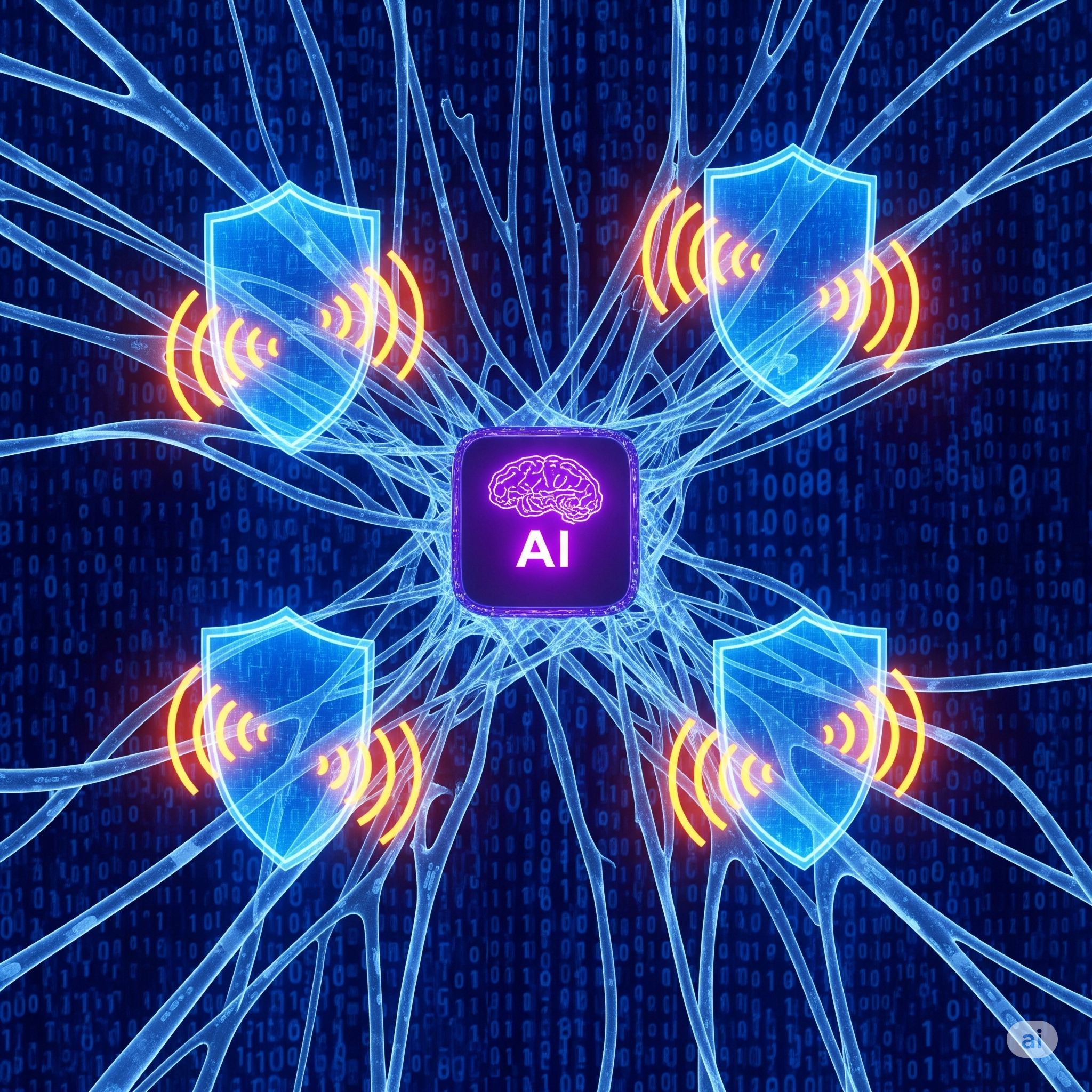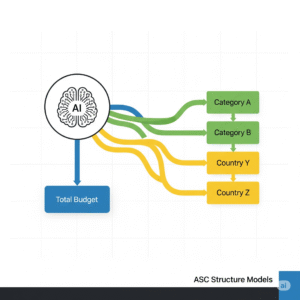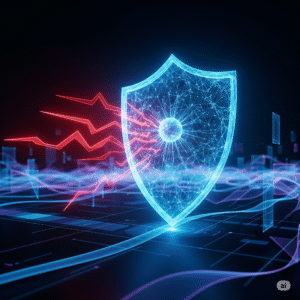The digital battleground is constantly evolving, with cyber threats becoming increasingly sophisticated and relentless. In response, a powerful ally haThe digital world is a constant battleground. Cyber threats are more complex and persistent than ever. A powerful new ally has emerged: AI in Cybersecurity. While AI already plays a key role in defense, many security experts are asking, “What’s next for AI in Cybersecurity in threat detection?” The answer points to a future where cyberattacks are predicted, stopped in real-time, and maybe even prevented before they begin.
Experts agree the next stage of AI in Cybersecurity will use even more advanced machine learning. These new systems will find small anomalies and predict attack patterns more accurately. This progress is vital because attackers also use AI to create more deceptive attacks. To stay ahead, we must integrate AI deeper into every level of our cybersecurity defenses. This is especially true for the critical area of threat detection.
This article will explore the exciting future of AI in Cybersecurity. We will look at new trends, real-world uses, and the impact of these changes on global security. Understanding what’s ahead is not just for security pros. It is vital for any organization or person trying to protect their digital assets in today’s dangerous online world.
Secure AI Systems | Cutting-Edge AI Tech
The Current State of AI in Cybersecurity Threat Detection
Before we look ahead, let’s understand how AI in Cybersecurity works for threat detection today. AI algorithms are widely used for tasks like analyzing network traffic for strange patterns. They find malware by watching its behavior and detect phishing in emails. Machine learning models are trained on large sets of both bad and good activity. This helps them recognize small changes that could signal an attack.
This process has made threat detection much faster and more accurate. AI systems can process huge amounts of data much faster than humans can. This lets them find threats that might otherwise be missed. They can also learn and adapt to new attack methods. This makes them more effective against evolving threats. However, today’s systems have limits. AI models can sometimes create false alarms, flagging normal activity as dangerous. Also, smart attackers can find ways to trick these systems.
Therefore, the next phase of AI in Cybersecurity will fix these problems. We are moving toward smarter, more aware, and more flexible threat detection.
Artificial Intelligence (AI) Cybersecurity
AI Data Analytics is Making YOU a Data Pro
Emerging Trends: The Next Wave of AI in Cybersecurity
Several important trends are shaping the future of AI in Cybersecurity for threat detection. These advances promise to greatly improve our ability to find and respond to cyber threats.
One major trend is the use of more complex machine learning models. This includes deep learning and reinforcement learning. Deep learning algorithms can analyze complex patterns in data. This helps them find subtle threats that older, rule-based systems might miss. Reinforcement learning, on the other hand, lets AI systems learn the best defense strategies through trial and error.
Another key area is combining threat intelligence with AI. Real-time information about known threats can be combined with AI’s power to analyze data. This allows security systems to find and block attacks before they cause harm. This proactive method is a big step forward in threat detection.
Also, using AI for behavioral analysis is growing. These technologies look at user activity to find signs of a compromised account or an insider threat. By knowing what is “normal” behavior, AI can spot even small changes that may signal a malicious act. This is a vital layer in modern threat detection strategies. To learn more about how AI can enhance your security strategy, read this report from Gartner about AI innovation in security.
Case Study: Darktrace and Enterprise Threat Detection
Darktrace shows how AI in Cybersecurity is used for advanced threat detection. Its “Enterprise Immune System” uses machine learning to learn the “normal” behavior for every device and user on a network.
The AI constantly watches network traffic and user behavior. It can find even small differences from this normal baseline. This method helps it find new and insider threats that standard security tools often miss. The technology has been praised for finding and lessening the impact of many cyberattacks. This shows the power of behavioral analysis driven by AI in Cybersecurity.
AI in Big Data Analysis Unlocks Hidden Profits
Proactive Threat Hunting with AI
Old cybersecurity methods often mean reacting to attacks after they happen. The next generation of AI in Cybersecurity is shifting to a more proactive approach. AI-powered threat hunting is becoming a key part of threat detection.
AI Scientific Research is Revolutionizing Data Analysis and Discovery
AI helps threat hunters by looking through huge amounts of security data. It finds possible signs of a breach that human analysts might not see. Machine learning algorithms can connect events that seem unrelated to uncover hidden attack patterns. This allows security teams to find and stop threats before they become a big problem.
AI can also automate many simple tasks involved in threat hunting. This frees up human analysts to focus on more complex and important investigations. This partnership between AI and human experts is crucial for staying ahead of smart attackers. The ability to actively hunt for threats is a major change in AI in Cybersecurity.
Enhancing Security Operations Centers (SOCs) with AI (AI in Cybersecurity)
Security Operations Centers are the front lines of cyber defense. But analysts there are often overwhelmed by all the alerts they get. This leads to burnout and missed threats. AI in Cybersecurity is changing SOC operations and improving threat detection efficiency.
AI-powered security systems can automatically analyze and prioritize alerts. They filter out noise and highlight the most critical issues. Machine learning can also automate response actions. For example, it can isolate infected devices or block bad IP addresses. This automation lowers the workload for human analysts. It also allows for faster and more effective responses to security incidents.
Additionally, AI-driven platforms are streamlining SOC work. They connect various security tools and automate complex response plans. This level of automation is essential for modern SOCs to fight the growing number and complexity of cyber threats. The use of AI in Cybersecurity is changing how SOCs handle threat detection.
Case Study: IBM Security and AI-Powered Analytics
IBM Security provides a strong example of how AI can improve cyber defense. Their solutions use AI in Cybersecurity for better threat detection and response. They apply advanced AI algorithms to find and react to security incidents quickly.
According to a report on AI and automation for cybersecurity by IBM, using AI has helped organizations find threats 30% faster. It has also boosted their return on security investment by 40%. The report shows that AI-powered systems provide detailed incident summaries and automate parts of the response. This speeds up investigations by an average of 55%. This shows how AI in Cybersecurity gives security teams powerful new tools for threat detection and automated responses.
The AI Arms Race: Responding to Adversarial AI
As AI in Cybersecurity gets better, so do the tactics of cybercriminals. Adversarial AI is a new field that uses AI to attack and trick AI-powered security systems. This includes creating malicious data that can fool AI models. Attackers make things that look harmless but can cause bad behavior.
Therefore, the future of AI in Cybersecurity in threat detection must also focus on building stronger AI models. These models need to be more resilient to adversarial attacks. This includes techniques like adversarial training. Here, AI models are trained on both normal and adversarial data. This helps them get better at finding and defending against these attacks. Winning this competition between offensive and defensive AI is key to keeping AI-powered security effective.
The Human Element: Collaboration is Key
Despite how advanced AI in Cybersecurity is, the human element is still vital. AI tools are powerful helpers, but they cannot replace human expertise and instinct. The best threat detection in the future will involve a strong partnership between AI systems and human security analysts.
AI can handle the hard work of data analysis and finding possible threats. Meanwhile, human analysts can provide the critical thinking, context, and strategic decisions needed to respond well to complex attacks. Training security pros to work with AI tools will be crucial for getting the most out of them. The future of AI in Cybersecurity is a future of teamwork. Humans and machines will work together to create a safer digital world.
Keyword List: AI in Cybersecurity, threat detection, AI for threat detection, future of AI in cybersecurity, machine learning cybersecurity, deep learning threat detection, adversarial AI, cybersecurity trends 2024, security operations with AI, AI-powered threat hunting, AI security tools, network security AI, malware analysis AI, phishing detection AI, user behavior analytics, AI in SOC, proactive threat detection, AI cyber defense, next-gen threat detection, intelligent cybersecurity.



